
Transcription
Subject: Working with Sen. McCain to ratify the ACHR
From: cure@curenational.org
To: [blacked out]
Bcc: [blacked out]
Date: Tuesday, August 28, 2018 07:14:50 AM EDT
Dear Friends,
Almost a year ago on September 15th, 2017, I was walking in the Russell Building when Sen. John McCain was coming toward me. He was by himself. I introduced myself and said that if the Senate ratified the American Convention on Human Rights (ACHR), the United States would have another "instrument" to keep torture from returning.
His response was immediate and replied that this is a "great idea." When I asked him for a contact in his office to follow up, he gave me the name of his chief of staff, Truman Anderson
He also listened when I explained that my wife and I started our prison reform organization CURE 45 years ago. Sen. McCain concluded our brief conversation with "I am honoured to know you!" Can you imagine that he said that when I was simply overwhelmed by meeting him.
I did do as Sen. McCain recommended and wrote for an appointment with Mr. Anderson. A few days later, I received an email from Elizabeth O'Bagy Sen. McCain's staffer over human rights, who gave me an appointment. I asked my longtime friend and human rights advocate, Joe Eldridge, to come with me to the meeting with Ms. O'Bagy.
We explained that President Jimmy Carter had already signed the ACHR and this, it needed only to be ratified. This takes two-thirds of the Senate, but Sen. McCain knew this when he told me that it was "a great idea."
Ms. O'Bagy suggested that the first step was to talk to Sen. Bob Corker, Chair of the Senate Foreign Relations Committee. I did introduce myself to him after a hearing where Sen. Corker talked about the United States doing "something very idealistic."
However, he admitted that wasn't very knowledgeable about the ACHR, but was very gracious and even invited me to continue the conversation and ride in the elevator for senators when he went to vote on the Senate floor.
After this visit, I had a chance to introduce myself to Sen. Tim Kaine, another member of the Senate Foreign Relations Committee, who was at the hearing. I explained my visit with Sen. McCain and my meeting with Ms. O'Bagy. He was very excited about possibly ratifying the ACHR!
Of course, the momentum for ratification ended with Sen. McCain's health problems. But, by sharing this, I hope we can get this momentum back? I think Sen. McCain would want us to try. I say this because he told me it was a "great idea" and he made sure that I met with the right staffer to "get the ball rolling."
Charlie
Charles Sullivan, President, International CURE*, PO Box 2310, Washington, DC 20013 202-789-2126
*International CURE has received consultative status from the United Nations.
PS. The American Convention on Human Rights, also known as the Pact of San Jose, is an international human rights instrument. It was adopted by many countries in the Western Hemisphere in San Jose, Costa Rica, on 22 November 1969. It came into force after the eleventh instrument of ratification (that of Grenada) was deposited on 18 July 1978.
The bodies responsible for overseeing compliance with the Convention are the Inter-American Commission on Human Rights and the Inter-American Court of Human Rights, both of which are organs of the Organization of American States (OAS).
Article 5. of the ACHR is the Right to Humane Treatment and states in (2) the following:
2. No one shall be subjected to torture or to cruel, inhuman, or degrading punishment or treatment. All persons deprived of their liberty shall be treated with respect for the inherent dignity of the human person.
===
(HTTPS://THECONVERSATION.COM/THE-NATIONAL-PRISON-STRIKE-IS-OVER-NOW-IS-THE-TIME-PRISONERS-ARE-MOST-IN-DANGER-102471)
PRISONS & POLICING
The National Prisons Strike Is Over. Now Is When Prisoners Are Most in Danger.
BY
Heather Ann Thompson, THE CONVERSATION
PUBLISHED
September 18, 2018
Over the last few weeks men and women across the United States – and even as far away as Nova Scotia, Canada – have protested to demand humane treatment for the incarcerated.
In 2016, when prisoners engaged in similar hunger strikes, sit-ins, and work stoppages, their actions barely registered with the national media. As someone who regularly writes about the history of prisoner protests and prison conditions today, this lack of interest was striking.
This time around, though, prisoner demands to improve the conditions of confinement have captured the attention of reporters everywhere. Coverage can be found in such major newspapers as The Washington Post and The New York Times. Popular magazines such as GQ and Teen Vogue have also published pieces.
All seem to sense that American prisons may well be descending into crisis, so perhaps it is time to start paying attention.
That our institutions of confinement are in a state of emergency is, in fact, not new. When prisoners tried to tell us this when they erupted in 2016, it was perhaps still possible to imagine that the abuses they suffered might soon be addressed by a seemingly robust bipartisan criminal justice reform effort in Washington, DC.
Today, however, with Donald Trump in the White House and Jeff Sessions heading the Department of Justice, it is much harder to conjure up such optimism. News of seven horrific prisoner deaths at Lee Correctional Facility in South Carolina last April made it quite clear that corrections officials are still failing to ensure prisoner safety and haven’t made the conditions inside their institutions any less brutal. This time, with politicians so noticeably less vocal about this vital issue, prisoners alone are calling the public to action.
That their determination to be heard is finally striking a chord, is good news for our nation.
Our Responsibility
Prisons and detention centers exist and operate in the name of the public good. Americans want to believe these institutions make our society safer by upholding the rule of law.
Yet, as those locked up keep telling us in the most painful and graphic detail, these places are barbaric. They do far more harm to society than good. These are places where men, women and children are placed in solitary confinement for periods considered torture by medical experts.
These are places where human beings are fed too little, are denied access to basic medical care, and are raped, abused and even killed.
These are places where children behind bars are increasingly isolated from their parents, and where parents behind bars find it almost impossible to connect with their kids, thanks to companies who charge usurious rates for calls, and push states to allow only “video visitations.” These myriad abuses take place in taxpayer-funded institutions, and can only happen because the public is utterly shut out.
And so, it is indeed positive that the media is finally shining light on what prisoners need in order to survive their time. They need “immediate improvements to conditions of prisons and prison policies that recognize the humanity of imprisoned men and women,” and also an end to prison slavery as well as real rehabilitation programs.
Prisoners also want to end the severe racial discrimination evident in our nation’s policing practices, laws and sentencing guidelines. And they are calling for the rescinding of 1996’s Prison Litigation Reform Act, which has made it difficult for prisoners to seek legal help.
But what happens next is also critical.
It is when the headlines fade, and prisons once again slip from the public’s consciousness that prisoners are in the most jeopardy.
Consider the brutal aftermath of the Attica Prison Uprising in 1971, when nearly 1,300 men took over that facility in upstate New York to call the nation’s attention to the inhumane conditions inside. As the state moved in to retake the facility, state troopers shot 128 men and killed 39 –prisoners and hostages alike. Countless other men were then tortured.
Or consider the reprisals experienced by prisoners in facilities such as Michigan’s Kinross prison in 2016.
And, of course, there is what the men in South Carolina’s Lee Correctional are enduring even now as you read these words – lockdowns 24/7 in 6×8 cells, insufficient food, and lack of basic and desperately needed medical care.
The fact is that men and women behind bars are most in danger during the days, weeks and months after they have dared to protest.
It is the responsibility of anyone who has voted for prison construction in their communities to know what happens in those institutions, particularly since this country has locked up more people in the last 40 years than ever before in its history – more than in any other country. We must pay attention to which companies benefit from such a harsh criminal justice system, and recognize the devastatingly high price that certain communities have paid for that same system to exist. And, because it ensnares so many of our most vulnerable citizens, we must insist that those inside be treated lawfully and humanely.
Other posts by this author
|
2023 may 31

|
2023 mar 20

|
2022 aug 23

|
2022 aug 23

|
2022 aug 23

|
2022 aug 23

|
More... |
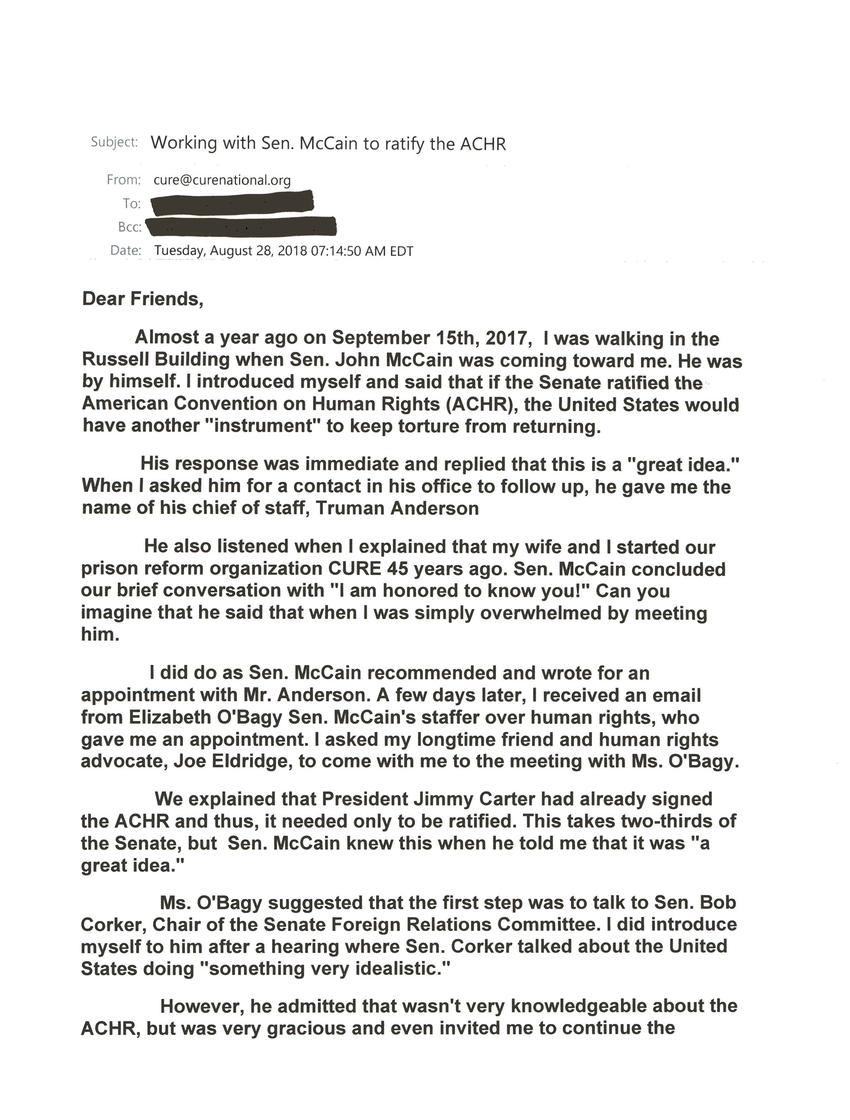
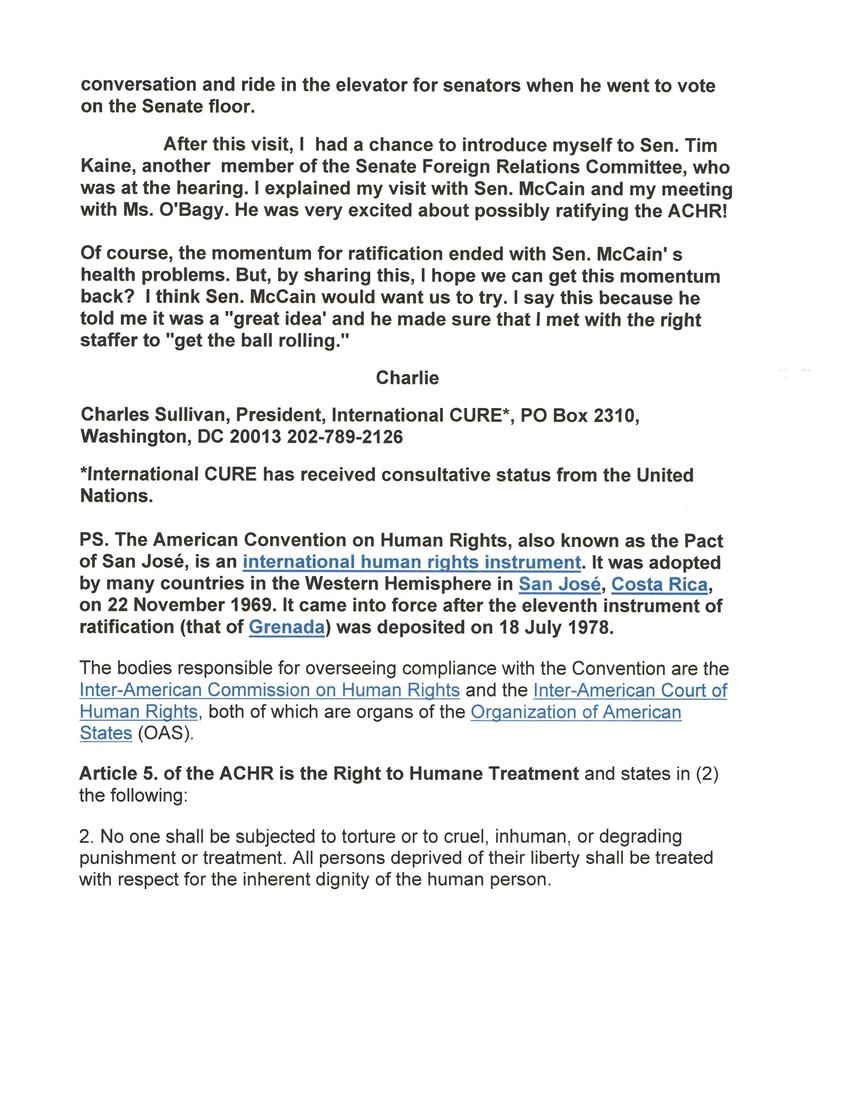
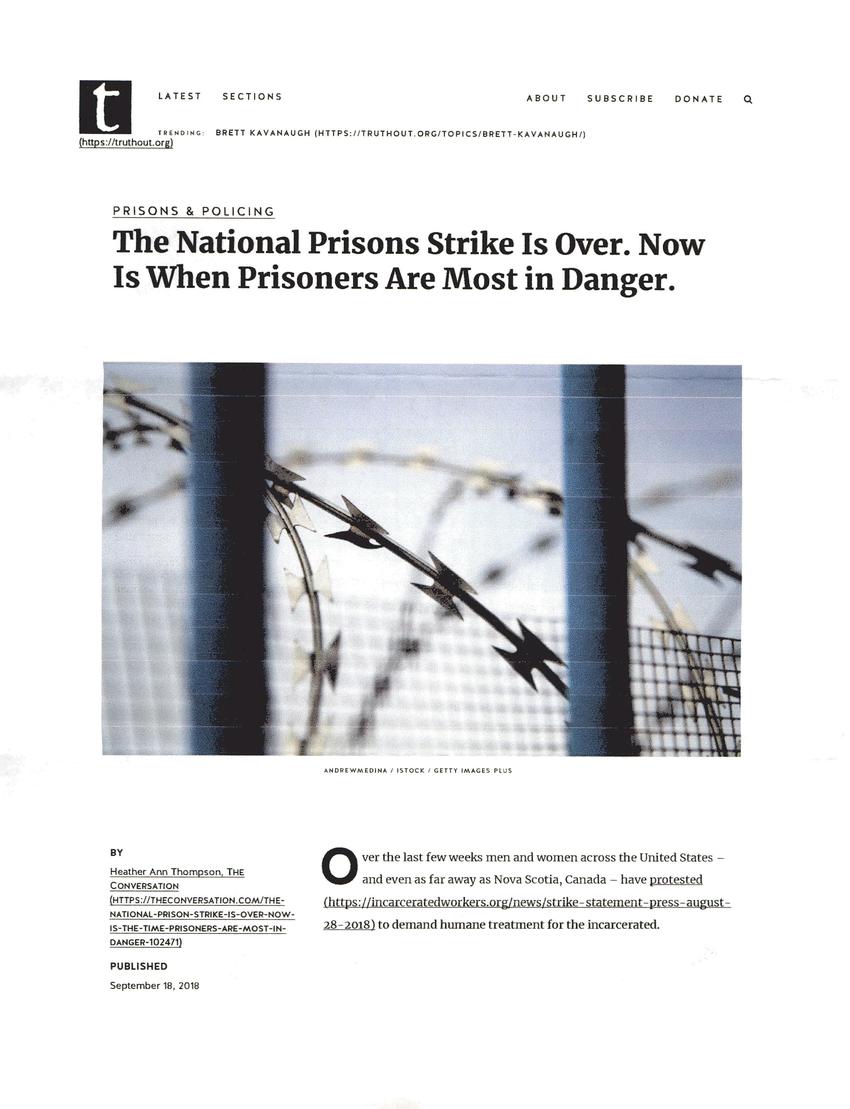
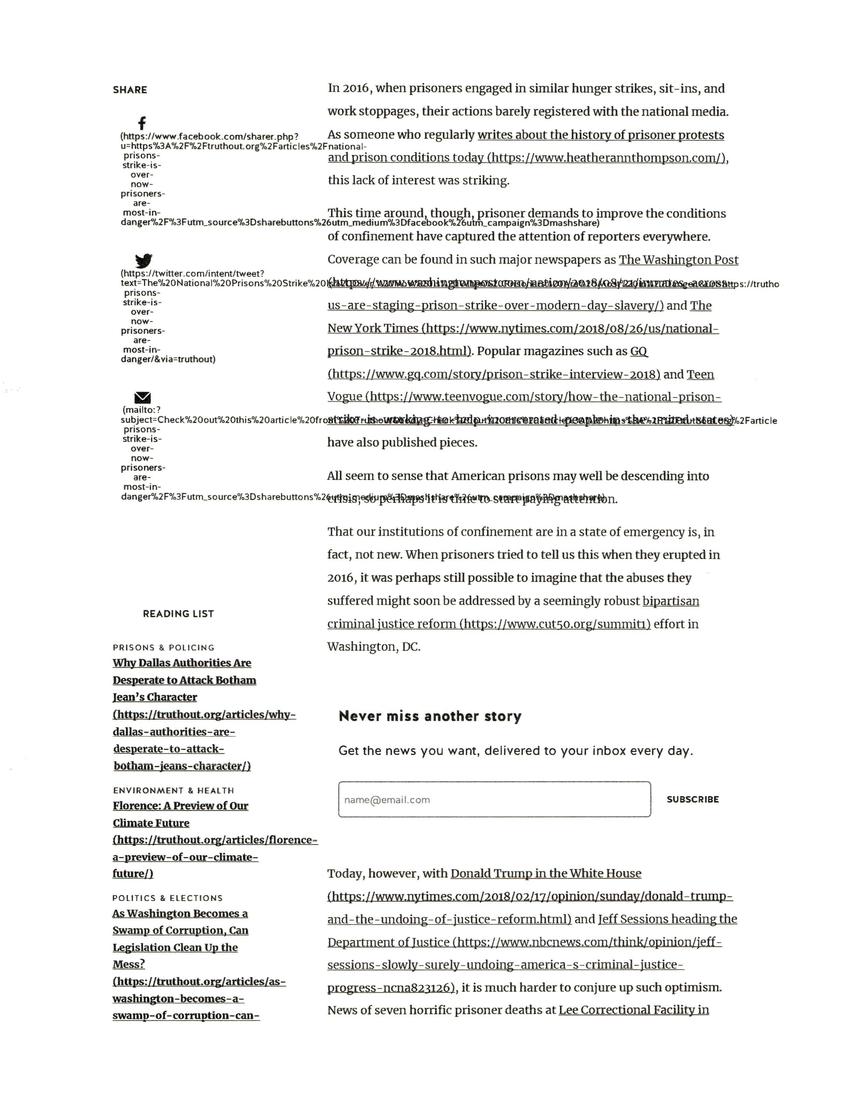
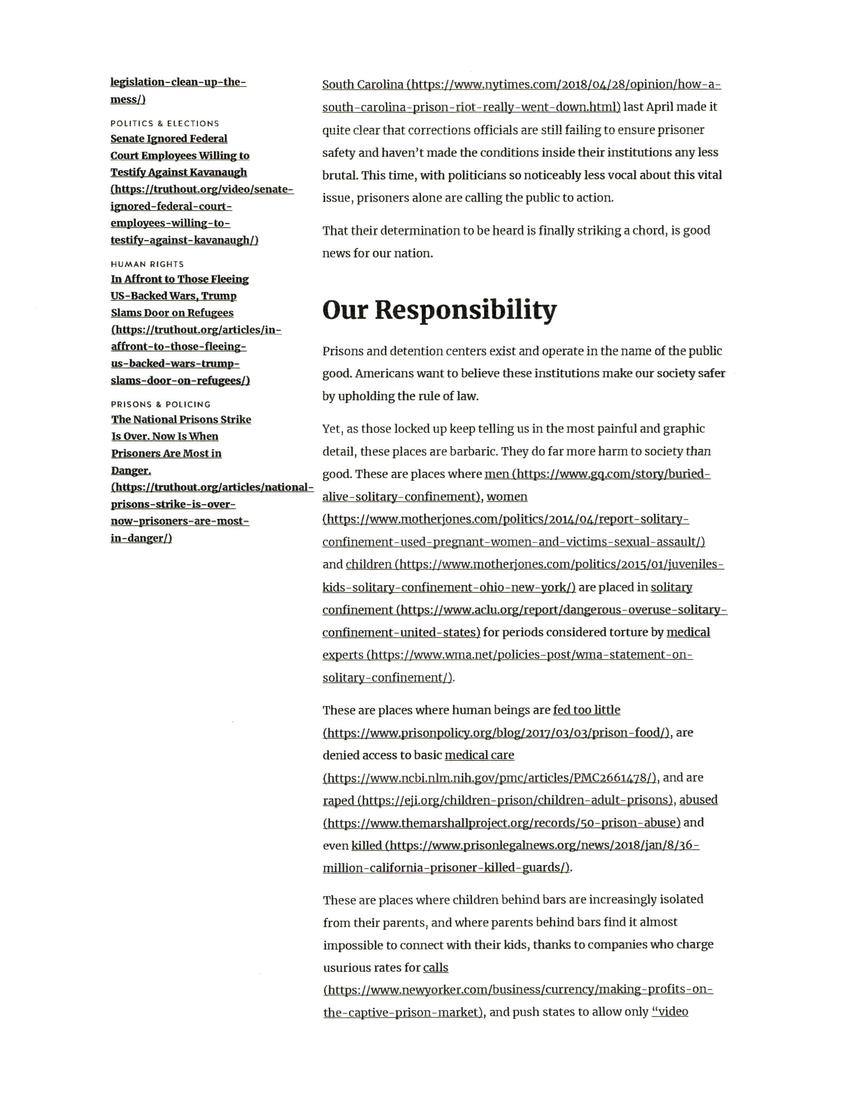
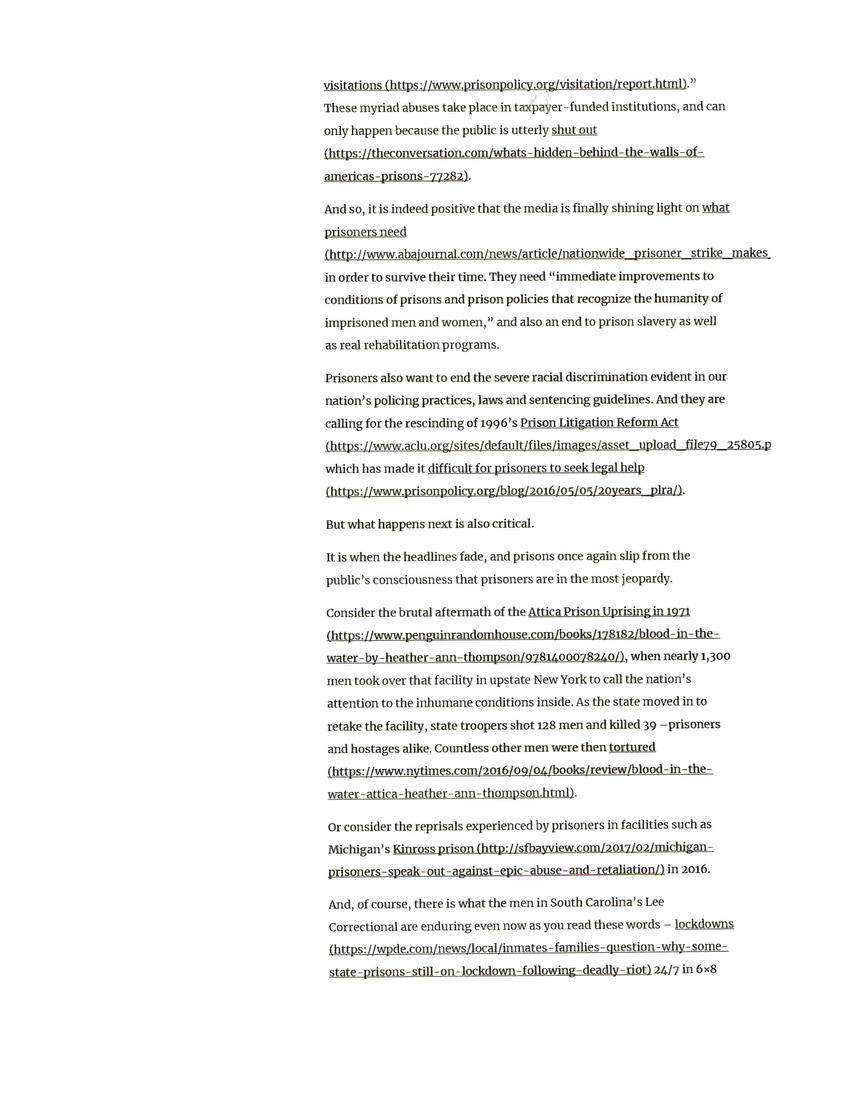

Replies